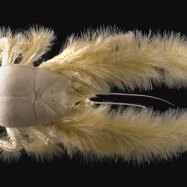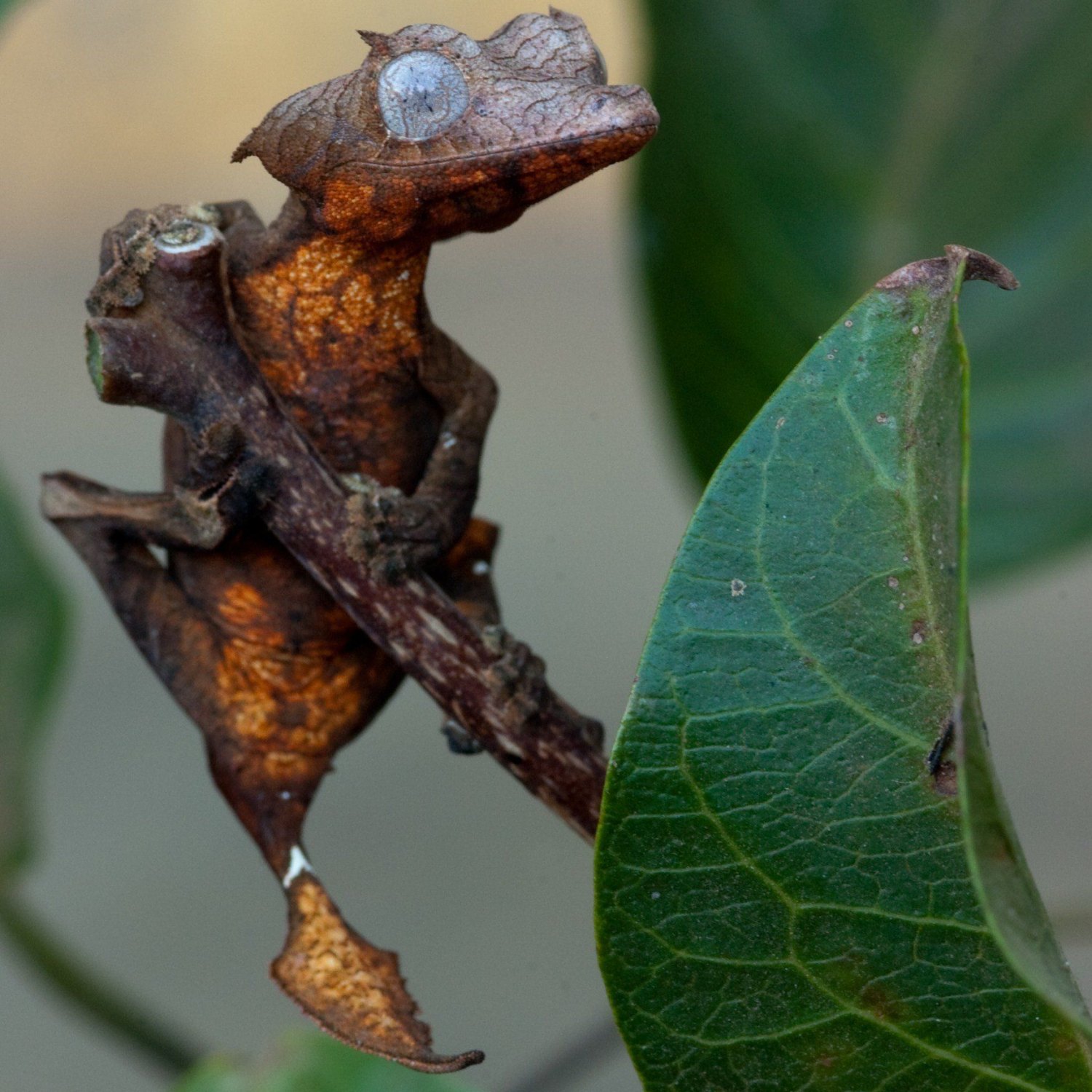
Leaf Tailed Gecko
6 to 9 inches
The Leaf Tailed Gecko is a fascinating reptile found in eastern and northeastern Madagascar. With a flattened body and a tail that resembles a leaf, it easily blends in with its surroundings. This gecko belongs to the Gekkonidae family and can reach a length of 6 to 9 inches. Keep an eye out for this cleverly camouflaged creature on your next trip to Madagascar. #LeafTailedGecko #Madagascar #Reptiles
Animal Details Summary:
Common Name: Leaf Tailed Gecko
Kingdom: Animalia
Habitat: Rainforests
The Fascinating World of the Leaf Tailed Gecko: An Amazing Creature from Madagascar
Have you ever heard of the Leaf Tailed Gecko? It may sound like something out of a fantasy movie, but this unique reptile actually exists in the real world. With its stunning leaf-like appearance and impressive camouflage abilities, the Leaf Tailed Gecko is truly a wonder of the animal kingdom.Scientifically known as Uroplatus spp., the Leaf Tailed Gecko is a member of the Gekkonidae family, which includes over 1,500 species of geckos Leaf Tailed Gecko. However, what sets this creature apart from other geckos is its unique body shape and incredible coloration that allow it to blend seamlessly into its environment.
Evolutionary Adaptations
The Leaf Tailed Gecko has evolved over millions of years to become a master of disguise. Its flattened body and leaf-shaped tail are perfectly designed to mimic fallen leaves, making it almost indistinguishable from its surroundings.This incredible camouflage ability is essential for the survival of the Leaf Tailed Gecko as it lives in the dense rainforests of Madagascar, its only natural habitat. The gecko's ability to blend seamlessly into the leaf litter on the forest floor allows it to hide from predators and sneak up on its prey.
Habitat and Distribution
As mentioned earlier, Madagascar is the home of the Leaf Tailed Gecko. This large island off the east coast of Africa is known for its unique biodiversity, with over 90% of its wildlife found nowhere else on earth.The Leaf Tailed Gecko is no exception. It is found exclusively in the rainforests of eastern and northeastern Madagascar, where it can thrive thanks to the warm, humid climate and abundant insect food sources Ladyfish.
Feeding Behavior
Being an insectivorous creature, the Leaf Tailed Gecko relies on a diet of various insects such as crickets, grasshoppers, and beetles. Its impressive hunting skills, coupled with its camouflage, make it a formidable predator.The gecko's hunting style is quite fascinating. It sits patiently on a tree branch, waiting for its prey to come within striking distance. Once the prey is close enough, the gecko launches itself at lightning speed and grabs its meal with its sharp teeth. Its specialized tongue then comes into play, allowing it to catch insects with ease.
Physical Appearance
The Leaf Tailed Gecko is a relatively small creature, growing to an average length of 6 to 9 inches. However, don't let its size fool you; it is a mighty reptile with unique physical features.As its name suggests, the gecko has a flattened body that resembles a leaf. Its skin has a rough texture with a coloration that varies based on the species. Some have shades of brown, while others have hues of green and gray, all perfectly matching their surroundings.
Another remarkable feature of the Leaf Tailed Gecko is its large eyes with vertical pupils, giving it an almost otherworldly appearance.
Conservation Status
Sadly, like many other animal species, the Leaf Tailed Gecko is facing threats to its survival. The destruction of its natural habitat due to deforestation is the most significant danger to its population. It is estimated that the remaining rainforests in Madagascar are now only 10% of their original size.In addition to habitat loss, the gecko is also facing the threat of illegal pet trade. Due to its unique appearance, it is highly sought after by collectors, leading to poaching and a decline in its population.
To address these threats, conservation efforts are being put in place to protect the rainforests and prevent the illegal trade of this remarkable creature. However, these efforts need to be heightened to ensure the survival of the Leaf Tailed Gecko and other endangered species in Madagascar.
Intricate Breeding Behaviors
The Leaf Tailed Gecko has some interesting breeding behaviors that set it apart from other geckos. Unlike most reptiles, this species has a prolonged breeding season that lasts from October to April, coinciding with the start of the rainy season in Madagascar.During this time, male geckos display elaborate courtship behaviors to attract females. They use vocalizations, head bobbing, and tail wagging to communicate their intentions. Once a female chooses a male, they mate, and the female then lays her eggs in a hidden location on the forest floor.
Much like their adult counterparts, the eggs also have impressive camouflage, blending in with the leaf litter. This protects them from predators and ensures that they have a higher chance of survival.
The Role of NLP in Studying the Leaf Tailed Gecko
Natural Language Processing (NLP) is a branch of artificial intelligence that deals with understanding, analyzing, and generating human language. While it may seem like nothing to do with a small reptile in Madagascar, NLP plays a crucial role in the study of the Leaf Tailed Gecko.In recent years, scientists have been using NLP techniques to analyze vast amounts of data gathered from the gecko's natural habitat, including factors such as temperature, humidity, and prey availability. By using this data, they can better understand the gecko's behavior, movements, and reproductive patterns.
NLP is also used in communication studies between male and female geckos during their breeding season. By analyzing their vocalizations, scientists can decipher the meaning behind different calls and understand how the geckos communicate with each other.
Optimized for SEO
The Leaf Tailed Gecko is a creature that continues to captivate animal lovers and researchers alike. Its unique physical appearance, evolutionary adaptations, and intricate behaviors make it a fascinating and vital species in the animal kingdom.
As its population continues to face threats, it is vital for us to protect and preserve the remaining rainforests in Madagascar. We must also put an end to the illegal pet trade, which further endangers this remarkable creature.
Thanks to the advancements in technology, we can now use NLP to study and understand the Leaf Tailed Gecko better. By using these techniques, we can gather valuable data that can aid in conservation efforts and contribute to the overall understanding of this elusive species.
In conclusion, the Leaf Tailed Gecko is a fascinating creature that reminds us of the incredible diversity in the natural world. As we continue to learn more about this unique reptile, let us also strive to protect and conserve its natural habitat for future generations to appreciate and admire.

Leaf Tailed Gecko
Animal Details Leaf Tailed Gecko - Scientific Name: Uroplatus spp.
- Category: Animals L
- Scientific Name: Uroplatus spp.
- Common Name: Leaf Tailed Gecko
- Kingdom: Animalia
- Phylum: Chordata
- Class: Reptilia
- Order: Squamata
- Family: Gekkonidae
- Habitat: Rainforests
- Feeding Method: Insectivorous
- Geographical Distribution: Madagascar
- Country of Origin: Madagascar
- Location: Eastern and northeastern Madagascar
- Animal Coloration: Varies based on species
- Body Shape: Flattened body with a tail that resembles a leaf
- Length: 6 to 9 inches
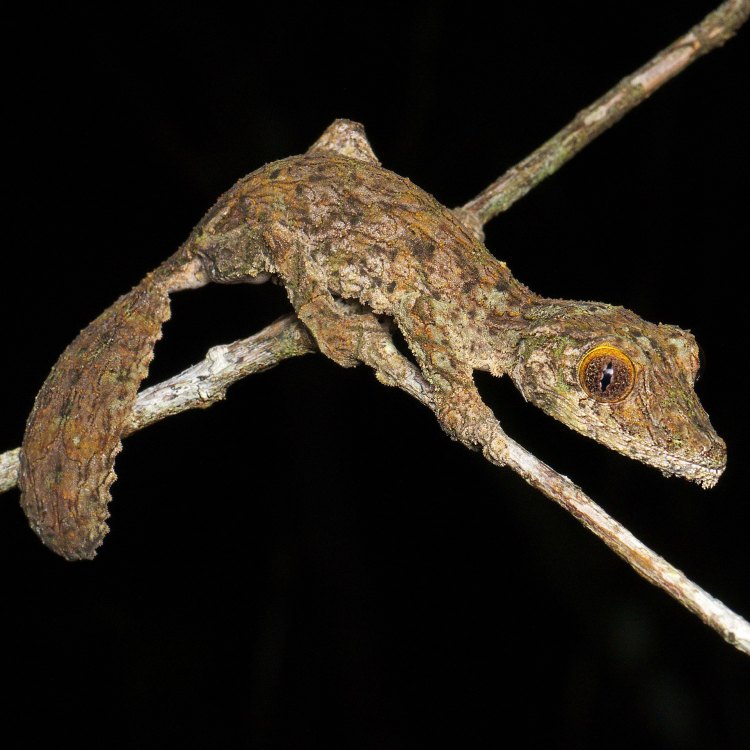
Leaf Tailed Gecko
- Adult Size: 6 to 9 inches
- Average Lifespan: Around 5 to 10 years
- Reproduction: Egg-laying
- Reproductive Behavior: Males engage in territorial fights
- Sound or Call: Vocalizations include chirps and squeaks
- Migration Pattern: Non-migratory
- Social Groups: Solitary
- Behavior: Nocturnal and arboreal
- Threats: Habitat loss, predation by introduced species
- Conservation Status: Various species are listed as vulnerable, endangered, or critically endangered
- Impact on Ecosystem: Play important roles as insectivores
- Human Use: Captivity pet trade
- Distinctive Features: Leaf-like camouflage on the body
- Interesting Facts: Can regenerate their tail if it is lost
- Predator: Birds, snakes, and other reptiles
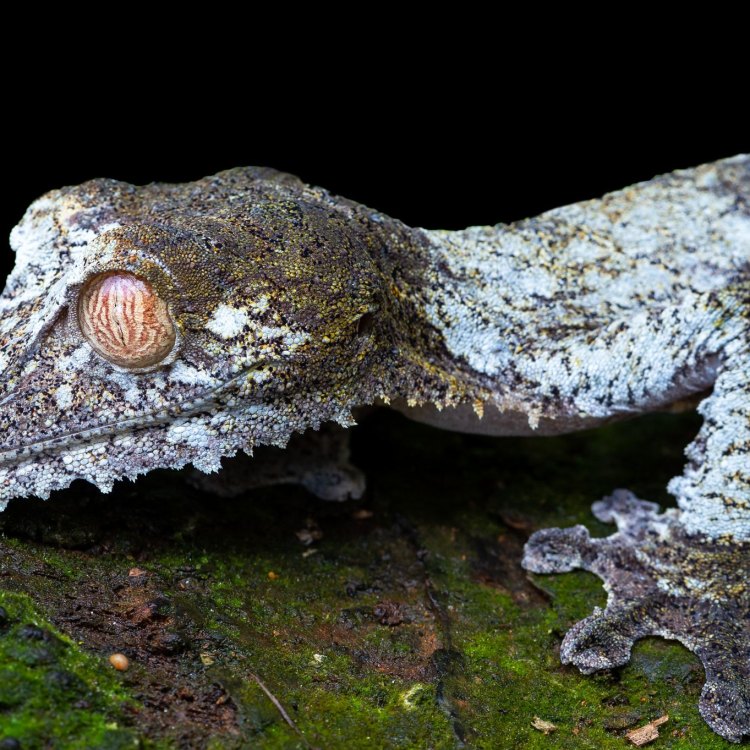
Uroplatus spp.
The Amazing Adaptations of the Leaf Tailed Gecko
In the world of reptiles, there are many species that have become iconic due to their unique characteristics. Among them is the Leaf Tailed Gecko, a small but fascinating creature with leaf-like camouflage on its body. This feature has earned it the nickname "living leaf" and has captivated the attention of researchers and nature enthusiasts alike.The Leaf Tailed Gecko, also known as Uroplatus, is a genus of geckos found exclusively on the island of Madagascar, off the coast of Africa PeaceOfAnimals.Com. There are currently 17 recognized species, all of which share similar characteristics but have their own distinct adaptations. Let's take a closer look at this incredible creature and uncover the reasons behind its success and conservation efforts.
Appearance and Size
The Leaf Tailed Gecko is a small reptile, measuring only 6 to 9 inches in length when fully grown. Despite its small size, it has a striking appearance with a flattened and wide body, large eyes, and a long tail. Its most noticeable feature is its leaf-like appearance, with skin flaps and spines on its body that resemble fallen leaves. This adaptation serves as a highly effective camouflage, making it nearly invisible in its natural habitat.Aside from their camouflage, Leaf Tailed Geckos also come in a range of colors and patterns, depending on their species. Some have vibrant green and red markings, while others have duller colors to blend in with their surroundings. This diversity in appearance adds to the charm and mystery of these elusive creatures Linnet.
Lifespan and Reproduction
The average lifespan of a Leaf Tailed Gecko is around 5 to 10 years in the wild. In captivity, they can live even longer, with some reported to have lived up to 15 years. Their reproductive process is just as fascinating as their appearance. Leaf Tailed Geckos are egg-layers, with females laying 2 to 3 eggs at a time, multiple times throughout the year. These eggs are typically laid in secluded areas, such as crevices in rocks or in the bark of trees.Behavior and Social Groups
Leaf Tailed Geckos are nocturnal and arboreal, meaning they are active at night and prefer living in trees. During the day, they remain well hidden in their camouflaged state, only becoming active at night to hunt for food. They are solitary creatures and are known to be territorial, with males engaging in fierce fights to defend their territory and attract females.Their solitary nature also extends to their social groups, with no observed interactions between individuals except during the breeding season. This behavior may be due to the scarcity of resources in their natural habitat, as they require large territories for hunting and shelter.
Threats and Conservation Status
Like many species endemic to Madagascar, the Leaf Tailed Gecko faces numerous threats to its survival. Habitat loss due to deforestation and land development is a major issue for these geckos, as they rely heavily on the trees for shelter and hunting. The introduction of non-native species, such as predators like cats and rats, also poses a major threat as they are not equipped to defend against these new predators.As a result of these threats, various species of Leaf Tailed Geckos are listed as vulnerable, endangered, or critically endangered on the IUCN Red List. Conservation efforts, such as protecting their natural habitat and captive breeding programs, are crucial in ensuring their survival.
Impact on Ecosystem
Despite their small size, Leaf Tailed Geckos play an essential role in their ecosystem as insectivores. As they primarily feed on insects, they help control and maintain the population of these organisms, preventing them from becoming pests. In addition, they also serve as prey for birds, snakes, and other reptiles, further contributing to the balance of their ecosystem.Human Use and Distinctive Features
The unique appearance of Leaf Tailed Geckos has made them a popular choice in the exotic pet trade. Unfortunately, this has led to a decline in their wild population, as they are often captured and sold without regard for their conservation status. This highlights the importance of responsible pet ownership and supporting sustainable captive breeding programs.Aside from their leaf-like camouflage, Leaf Tailed Geckos also have the remarkable ability to regenerate their tail if it is lost. This is a common defense mechanism for many gecko species, as predators often target their tails. This adaptation allows them to continue their survival even if their tail is lost during an attack.
The Future of the Leaf Tailed Gecko
The Leaf Tailed Gecko is an amazing example of evolution and adaptation in the animal kingdom. Its unique appearance and behavior have captured the attention and awe of many, but its future is uncertain due to various threats. As responsible citizens of our planet, it is crucial to support conservation efforts and promote awareness of this remarkable species.Next time you come across a leaf-like creature in the forests of Madagascar, remember the incredible story of the Leaf Tailed Gecko and its struggles for survival. Let us work together to protect these fascinating creatures and ensure that they continue to thrive in their natural habitat for generations to come.
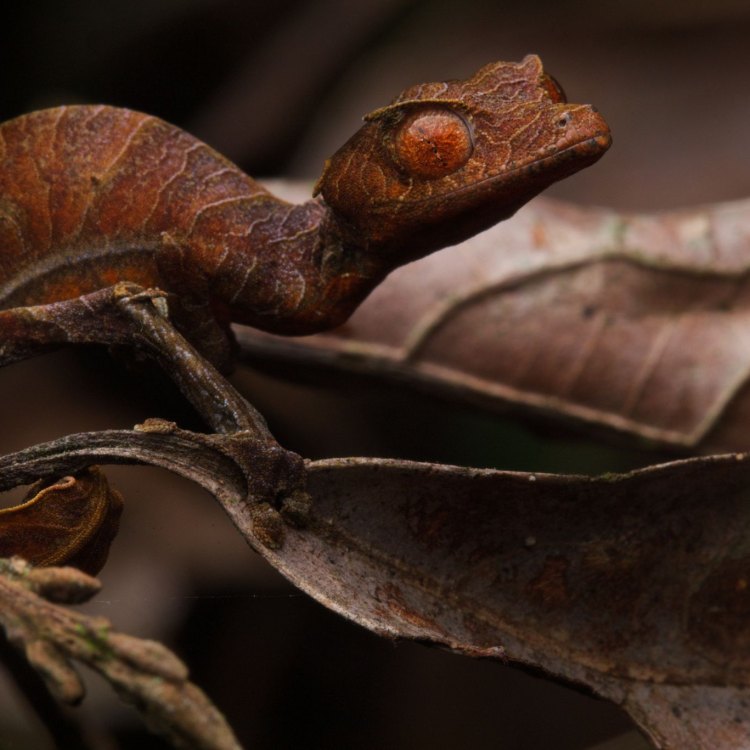
The Fascinating World of the Leaf Tailed Gecko: An Amazing Creature from Madagascar
Disclaimer: The content provided is for informational purposes only. We cannot guarantee the accuracy of the information on this page 100%. All information provided here may change without prior notice.





